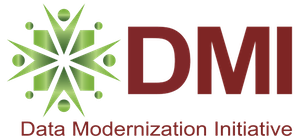- Synergy between CDC “enterprise” improvements and STLT improvements: As discussed in an earlier post, there is an ongoing tension between CDC’s need for building national data sets — usually with de-identified data — and a particular public health agency’s need to improve its data by implementing cross-program integration. DMI may be the bridge between these two priorities, though without adequate funding and workforce it will feel more like an obstacle than an enabler as many activities are “squeezed” through its constrained capacity. STLT public health agencies need to look beyond their strictly parochial interests (sometimes despite pressures to the contrary) and consider their place in the national data fabric. And for its part, CDC needs to be clear about how initiatives that promote a more national view of public health data serves everyone’s needs in the end.
- COVID June 2024 funding “cliff”: Public health agencies have received a significant amount of funding to help fight the COVID pandemic, including funding for system improvement and workforce development. However, this funding is due to expire at the end of June 2024. This leaves a huge potential shortfall as agencies have staffed up with COVID funding with no obvious replacement, leaving a situation of potential staff layoffs and reductions.
- Choice between “going wide” or “going deep”: While overall DMI funding is substantial, it is being distributed among many, many Federal and STLT agencies. That means that any given agency is not actually receiving all that much incremental funding. While the vision for DMI is fairly comprehensive, its implementation on the ground will likely be more incremental. That means that many agencies will need to choose between addressing a limited number of cross-cutting systems issues (“going wide”) and more comprehensive improvements to a very limited number of specific systems (“going deep”). They will not likely be able to fund both.
 Fatigue after fighting the pandemic: The past several years have been very tiring and stressful on everyone, but especially those individuals in public health and related industries that have been working to fight the pandemic. There has been a large amount of turnover in key public health leadership positions including information technology. And anecdotally it appears that while some public health professionals held on during the peak of the pandemic, retirement age and fatigue are catching up to them and they are leaving the field.
Fatigue after fighting the pandemic: The past several years have been very tiring and stressful on everyone, but especially those individuals in public health and related industries that have been working to fight the pandemic. There has been a large amount of turnover in key public health leadership positions including information technology. And anecdotally it appears that while some public health professionals held on during the peak of the pandemic, retirement age and fatigue are catching up to them and they are leaving the field.- Tight labor market, especially for technical positions: Skilled labor for public health is in short supply, especially individuals with domain expertise and advanced technical skills.There is some movement of talent between agencies, vendors, professional associations, and consulting, but it feels much like a zero sum game. Public health will have to find new ways to attract labor from other sectors of the market, and then train them appropriately. Recent Congressional funding should help.
- Lack of understanding of open source concepts and utility: As we pointed out in an earlier post, over the last ten to twenty years core public health information systems have aged and their architectures have become outdated. Systems need to be rearchitected or completely replaced with new options that more natively leverage cloud computing strengths. Systems should become more modular, enabling the substitution of one component for a better/enhanced one in the future without replacing the whole system. Open source components and systems will increasingly become part of this landscape, yet there is limited understanding of open source concepts among agencies, and an unclear open source strategy from CDC (though the Northstar Architecture and shared component activities have certainly highlighted open source).
- New technologies can be challenging to implement well: New technologies related to cloud computing, Software as a Service (SaaS), and modular design are evolving rapidly. For agencies, this will necessitate a change in approach: from lowest cost to best value; from fixed-price or deliverables-based projects to challenge-based procurement; from monolithic, COTS systems to modular and open source; from waterfall development techniques to “finish” a system to continuous development and Agile methodologies. These new approaches are not easy to implement even if they will provide significant payoff in the long run.
- Limited exposure to date by industry partners to DMI concepts and plans: To date, CDC has largely kept industry partners out of the mainstream of DMI planning, collaboration, and information dissemination. The CDC’s Consortium for Data Modernization is not open to industry participation and its proceedings are not currently made public. More recently, the CDC Foundation has invited industry partners to participate in a DMI-focused Industry Day Webinar in January 2023 to be followed by a full Industry Day event, to be held on February 27-28, 2023, which is a step in the right direction.
- Impact of CDC reorganization not well understood: After a review of agency operations, CDC initiated a reorganization of its activities in the spring of 2022. We have begun to see changes ripple throughout the organization but the ultimate impact of these changes is not well understood outside of CDC. The impact of this reorganization on the planning and management of information technology projects and initiatives is equally unclear.
This post was authored by Noam H. Arzt, and first published in the HLN Blog. It is reprinted by Open Health News with permission. The original post can be found here.
